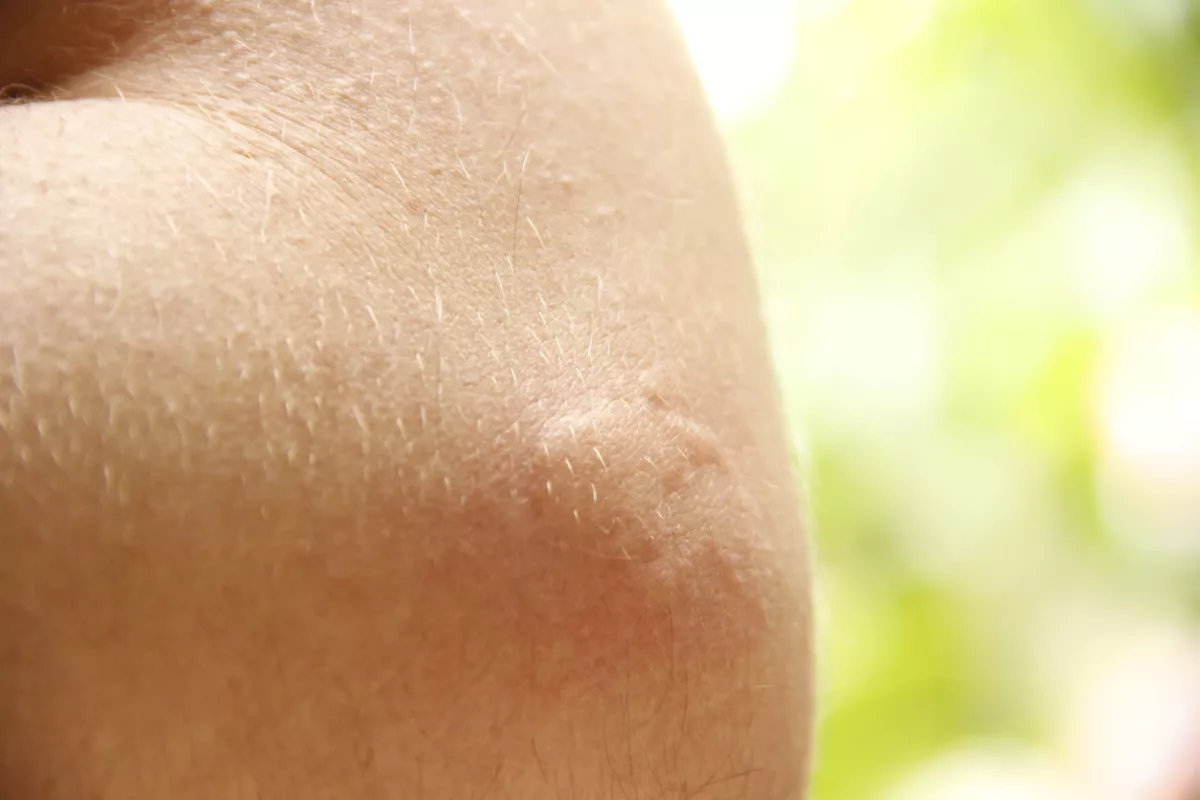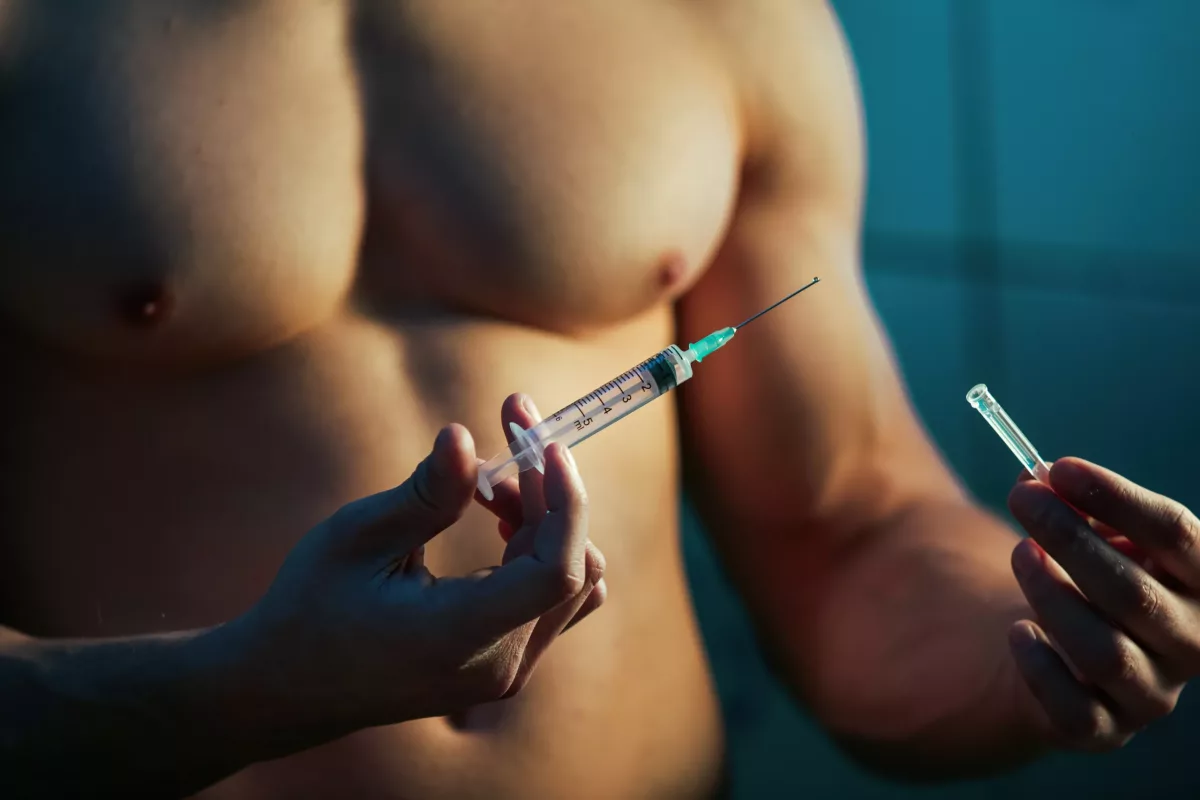A skin condition that causes small and painful lumps under the skin is called hidradenitis suppurativa (HS) or acne inversa. These lumps often appear in the areas where the skin rubs together (including armpits, groin, buttocks, and breasts). Usually, the lumps heal slowly, can recur, and may cause certain tunnels under the skin and scarring.
While it may affect people of any age, it is mostly diagnosed after puberty (before 40 years old). This condition can be difficult to treat and persist for long periods. Sometimes, the symptoms of this condition worsen over time, which may cause emotional distress. Healthcare providers usually treat this condition with medical and surgical therapy.
In general, females are 3 times more prone to develop acne inversa than males. Moreover, Black people are at higher risk of developing this condition compared to other races. Experts think that they have some genes that contribute to it.
Symptoms
This condition may negatively affect multiple parts of the body. Check below some symptoms of this skin disorder:
- Blackheads – These are small and pitted areas of skin, which often appear in pairs.
- Painful pea-sized lumps – Commonly, hidradenitis suppurativa begins with a single painful lump under the skin that does not go away for weeks or even months. Thereafter, more lumps may develop in the parts of the body where you have more sweat and oil glands, or the skin rubs together (including the groin, breasts, buttocks, and armpits).
- Leaking bumps or sores – Sometimes, bumps or sores may become bigger and break, causing drainage of pus with an odor.
- Tunnels – If you have this condition for long periods, it may cause certain tunnels to form under the skin. Usually, these tunnels connect lumps between them.
Some people with hidradenitis suppurativa may experience mild symptoms. Worsening of the symptoms is often associated with people who smoke or are obese. However, people with a healthy weight who do not smoke may also develop a severe form of the disease.
The only way to prevent severe symptoms and serious complications is early detection and treatment. Do not hesitate to see a doctor if any of the following symptoms occur. Examples include:
- The symptoms interfere with movement
- Severe pain
- The lumps do not heal within 2-3 weeks
- Acne inversa recurs
- Lumps appear in multiple parts of the body
It is important to know that hidradenitis suppurativa is not just a boil. Do not ignore the symptoms and get treatment as soon as possible.
Causes
The main cause of this condition is blocked hair follicles. However, experts do not know why these blockages happen. Some experts think that a combination of hormones, genetic factors, smoking, and excessive body weight could play a role.
Moreover, infections or being unclean cannot cause acne inversa, and this skin disorder is not contagious. It means that the condition cannot spread to other people.
Risk Factors
While it is not possible to find the exact cause of hidradenitis suppurativa, healthcare professionals have identified some factors that could increase your risk of developing it. Check some examples below:
- Age – People in their teens and 20s are at higher risk of developing this skin disorder.
- Sex – Women are more likely to develop this condition than men.
- Race – Black people are at increased risk of developing hidradenitis suppurativa compared to other races or ethnicities.
- Family history – If you have a sibling or parent with acne inversa, your risk of developing it significantly increases.
- Some health conditions – Obese people are more likely to develop a severe form of hidradenitis suppurativa. It is also associated with severe acne, arthritis, diabetes, metabolic syndrome, and inflammatory bowel disease (IBS).
- Smoking – Tobacco products are linked with this condition. If you face problems with smoking cessation, discuss it with your doctor.
What Are The Possible Complications of Hidradenitis Suppurativa?
People with this skin disorder may also experience some complications. These include:
- Infection – Some people with this skin condition may experience secondary infections.
- Scars and skin changes – Usually, the lumps and wounds caused by this condition heal quite difficult, which may lead to rope-like scars or pitted skin.
- Restricted movement – If you develop sores or scar tissue, it may interfere with movement, especially if the condition affects the thighs or armpits.
- Skin cancer – People who suffer from chronic (long-term) hidradenitis suppurativa are at increased risk of developing squamous cell carcinoma, especially when the disease affects the perianal area (tissue around the anus).
- Swelling – Usually, this condition affects parts of the body that contain lymph nodes. As a result, it may interact with the drainage system of the lymph nodes, causing the legs, arms, or genitals to swell.
- Psychological effects and social isolation – Depending on the location of the lumps, some people may experience anxiety or depression when outdoors.
- Chronic (long-term) pain – Some people may experience severe pain that is much worse than other skin conditions (such as psoriasis).
Diagnosis
Usually, it is challenging to diagnose this condition because it can be mistaken for pimples or acne. Sometimes, it takes years to get the correct diagnosis.
Physicians diagnose this condition based on the symptoms, skin appearance, and medical history. Your doctor may refer you to a healthcare professional who specializes in skin conditions (a dermatologist).
However, there are no laboratory tests that can confirm this condition. In some cases, doctors may get a small sample of pus that drains from the skin for testing.
Treatment
Physicians usually prescribe medicines, surgery, or both to reduce symptoms and prevent serious complications. For example:
Medicines
The following medicines are often recommended by doctors for people with hidradenitis suppurativa. Examples include:
- Antibiotics – Physicians usually recommend topical antibiotics to relieve mild symptoms of acne inversa. However, if the condition spreads to other parts of the body, doctors may prescribe oral antibiotics (such as Doxycycline, Clindamycin, Rifampin, or Rimactane). Those who develop a severe form of the disease usually take antibiotics for months.
- Steroid injections – Doctors recommend Triamcinolone acetonide or Kenalog-10 to lessen swelling and inflammation.
- Hormonal therapy – Sometimes, you may need hormone pills (including Estrogen-containing combined oral contraceptives such as Estradiol and Estradiol/Norgestimate). Doctors may also prescribe Isotretinoin (a medicine primarily used to treat acne) and Spironolactone (which helps decrease the need for antibiotics).
- Biologics – The following medicines are often administered by injection to lessen the symptoms. There are several medications approved for hidradenitis suppurativa treatment. For example, Adalimumab, Infliximab, or Remicade.
- Retinoids – This group of medicines can be an option for people with acne-like diseases. However, retinoids should not be used during pregnancy or breastfeeding.
- Pain relievers – People who experience severe pain can use over-the-counter pain relievers, such as Ibuprofen, Naproxen sodium, Acetaminophen, and others. However, before taking any of them, discuss it with your healthcare professional.
Other Treatments
Doctors may also recommend other treatments in addition to medicines to improve the effectiveness of the treatment. For instance, doctors recommend surgery to manage tunnels, bumps, or abscesses. Check below some treatments:
- Uncovering the tunnels – During this procedure, doctors will remove tissue to expose tunnels under the skin. It is called unroofing, and it is recommended for people with moderate or severe acne inversa.
- Punch debridement – It involves the removal of inflamed bumps.
- Laser therapy – This treatment uses a carbon dioxide laser that helps treat sores on the skin.
- Surgical removal – Usually, this treatment is recommended for people with chronic or severe symptoms.
- Incision and drainage – While it is not very effective, it may provide temporary pain relief.
Home Remedies
Sometimes, the following lifestyle changes may help control the condition even without medicines or surgery. For example:
- Daily skin care routine – Regularly use a body cleanser that is not soap or an antiseptic wash (such as Chlorhexidine 4% or Benzoyl peroxide).
- Take pain relievers – If you experience severe pain, you may consider over-the-counter (OTC) pain relievers, including Aspirin, Acetaminophen, Ibuprofen, and others.
- Regular physical activity – Stay active because it helps keep a healthy weight.
- Dietary changes – Dieticians may recommend avoiding dairy, red meat, and foods with a high glycemic index because they may worsen the symptoms of this skin disorder.
- Stop smoking – If smoking cessation is a problem for you, discuss it with your healthcare professional.
Frequently Asked Questions
What is the main cause of hidradenitis?
This condition usually appears due to blocked hair follicles. Healthcare professionals do not fully understand why these follicles become blocked. However, they think there is a combination of hormones, genetic factors, smoking, and excessive body weight.
What helps with hidradenitis suppurativa?
Healthcare professionals usually recommend the following treatments for people with this condition. For example, topical and oral antibiotics, steroid injections, hormonal therapy, and biologics. In severe cases, physicians may recommend surgery. However, lifestyle changes are also important in treating hidradenitis suppurativa. These include regular skin care, weight loss, dietary changes, and others. For more details, discuss it with your doctor.
What happens if HS goes untreated?
If you ignore the symptoms and do not get treatment, it may lead to some complications. These include worsening of the symptoms, scarring, infections, and an increased risk of skin cancer. This article does not contain all possible complications of hidradenitis suppurativa. Ask your healthcare provider if you have additional questions.




